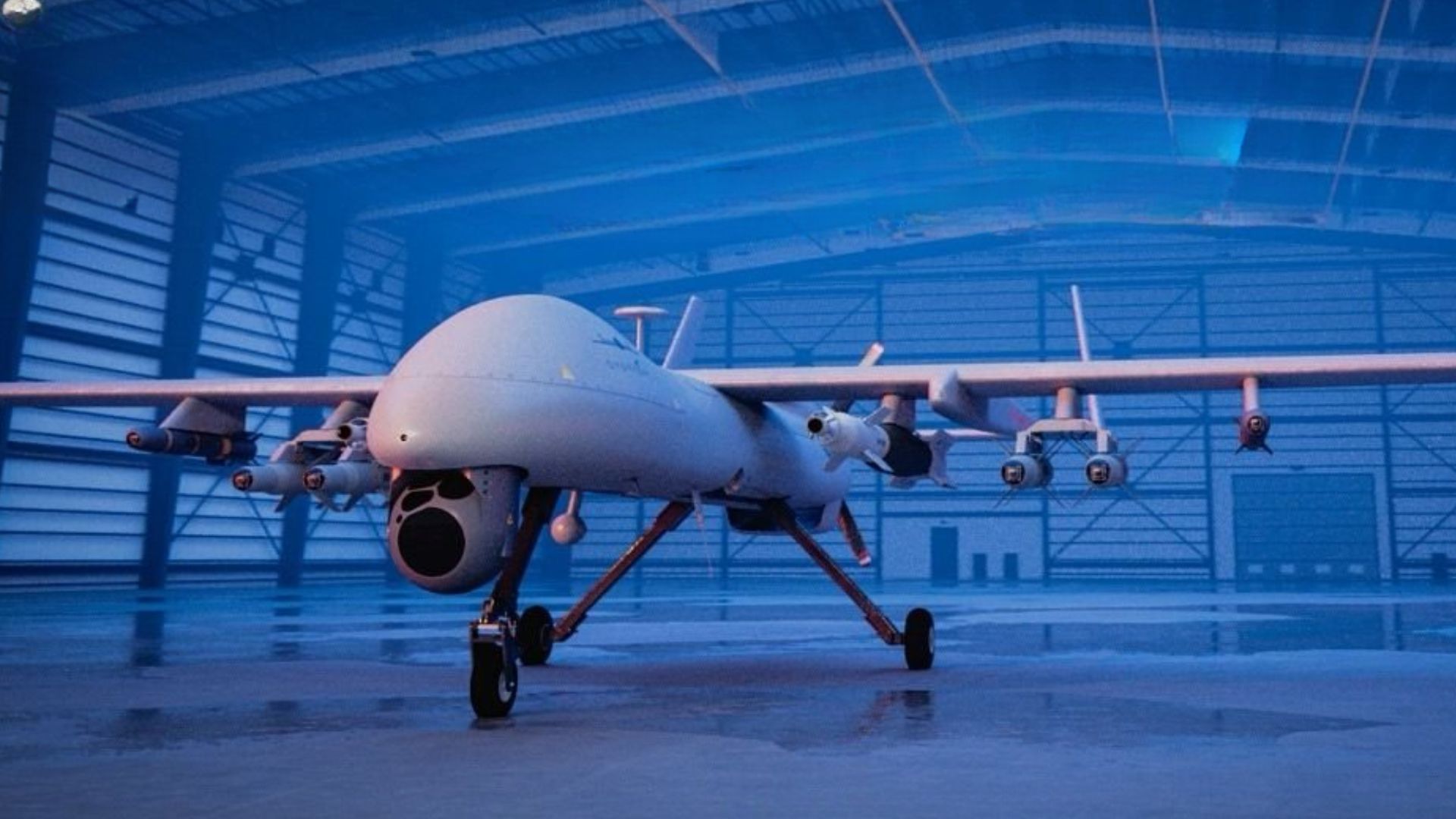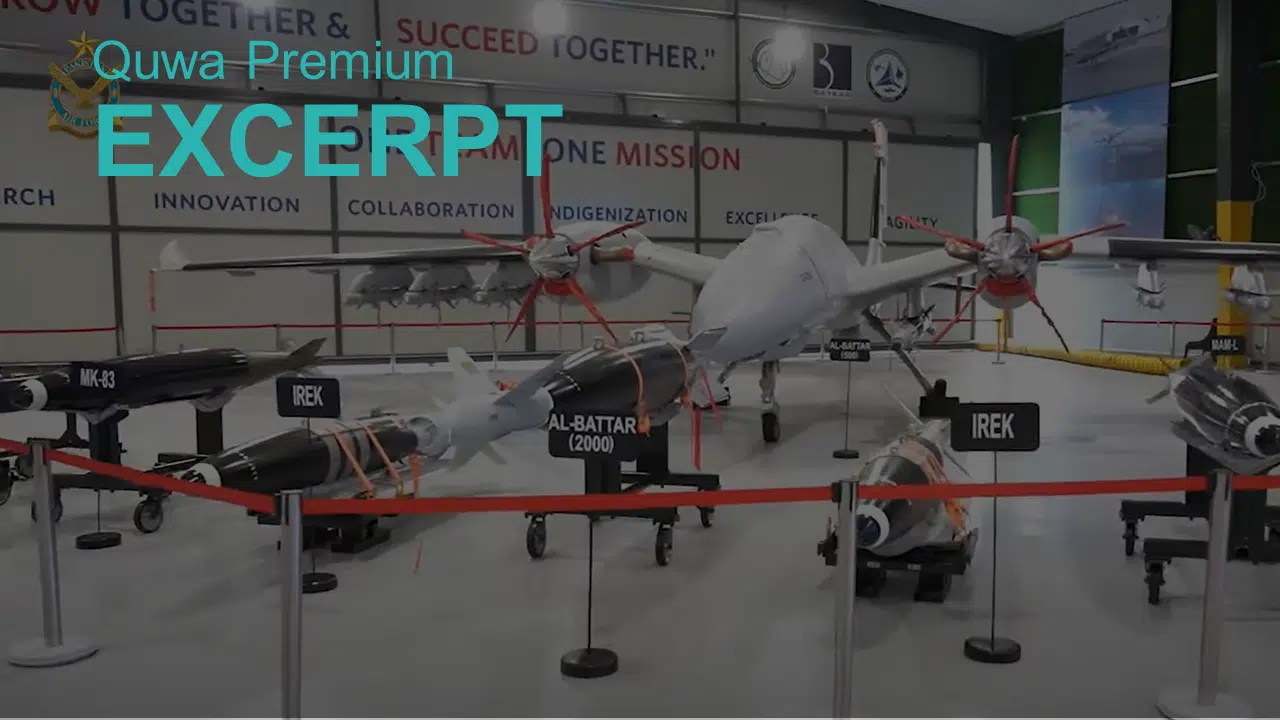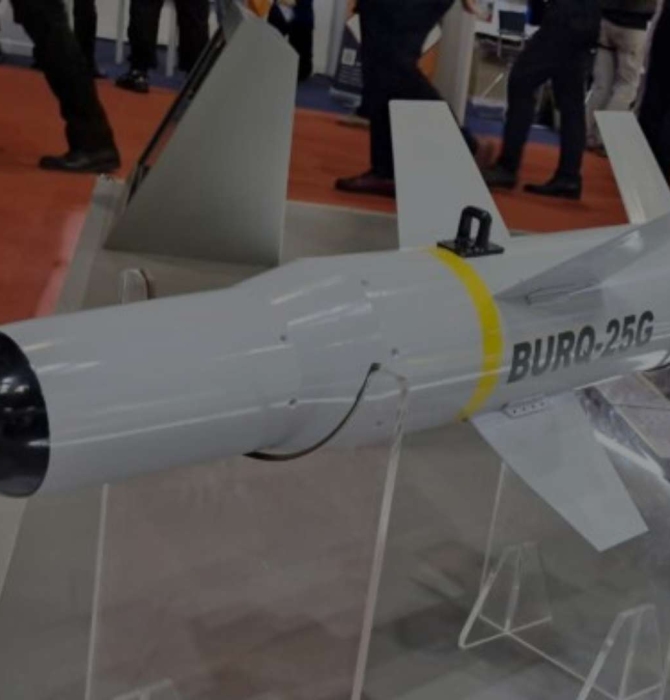7597Views

Pakistan’s Shahpar-III Promises a Next-Gen Drone Ecosystem Quwa Premium
At the 2024 International Defence Exhibition and Seminar (IDEAS 2024) in Karachi, Pakistan, Global Industrial and Defence Solutions (GIDS) – a conglomerate of many Pakistani state-owned enterprises (SOE) – held a major showcase of its latest unmanned aerial vehicle (UAV) program, the Shahpar-III.
The GIDS Shahpar-III is Pakistan’s largest and most advanced drone program to-date. A Group 4-class medium-altitude long-endurance (MALE) UAV with a maximum take-off weight (MTOW) of 1,650 kg, the Shahpar-III promises significant range and a much-improved payload and varied mission capability compared to any of Pakistan’s other domestic drones.
On the surface, the Shahpar-III’s specifications reflect a design that is similar in size to China’s CH-4, Turkiye’s Anka-S, and the American MQ-1C Gray Eagle. However, as the Shahpar-III is yet to fly, the actual performance of Pakistan’s new drone is to be determined.
That said, the level of attention Pakistan’s SOEs are paying to the Shahpar-III points to a deep level of domestic interest in the UAV. Not only is there an effort to develop many munitions and subsystems, but a focus on achieving niche, yet complex, mission roles. The latter will include maritime operations, deep strike against conventional targets, and electronic warfare (EW).
It is unlikely that Pakistan would foot the Shahpar-III’s development bill unless it was backed by the Pakistan Army (PA), Pakistan Navy (PN), and/or Pakistan Air Force (PAF). Pakistan did not disclose the development cost of the Shahpar-III up to this point. However, one can get a partial understanding by evaluating similar programs from elsewhere.
For example, Turkiye spent $107 million USD to develop the Turkish Aerospace Industries (TAI) Anka. It is unlikely that this amount covered the total cost as eventual orders of the Anka and its subsequent orders would hover around $20-30 million US per unit. Therefore, the total overhead of the Anka likely exceeded the $107 million USD figure.
One can plausibly see the Shahpar-III costing Pakistan at least $100 million USD, if not potentially closer to $150-200 million USD. This is a significant investment, one that would not have been made if the goal was to produce for only export. Combined with the growing ecosystem of weapons and sensors, a large domestic order could drive significant foreign interest in the Shahpar-III.
Shahpar-III: Pakistan’s Next Workhorse Drone?
Pakistan’s tri-services – i.e., PA, PN, and PAF – operate a wide variety of domestic and foreign-sourced drones, the latter primarily being from China and Turkiye.
Among these, the Bayraktar TB2 and China Aerospace Science and Technology Corporation (CASC) CH-4B being particularly popular. The PA and PN operate the CH-4B, while the PAF flies both the Bayratkar TB2 and Akıncı, Chinese Wing Loong II, and Leonardo Falco.
Of the domestic drones, the Burraq, Shahpar-I, and Shahpar-II are among the PA and PAF’s mainstay UAVs, especially for intelligence, surveillance, and reconnaissance (ISR) and light-strike roles.
None of the tri-services operate large numbers of UAVs in the 1,500 kg to 2,000 kg range in terms of MTOW. In fact, it seems that the PAF is currently the sole operator of large UAVs with MTOWs of over 4,000 kg via the Wing Loong II and Bayraktar Akıncı, which weigh 4,200 kg and 5,500 kg, respectively.
With the exception of a handful of CH-4Bs, the PA and PN are mostly reliant on smaller UAVs weighing under 1,000 kg. Thus, there may be a gap in the 1.5-ton to 2-ton MTOW range across each of the tri-services, especially the PA and PN, which have to commit to larger designs in numbers.
In fact, some of the capabilities revealed at IDEAS 2024 speak to surface ISR and target acquisition (ISTAR) and maritime roles, further reinforcing the idea that the PA and PN may be the prime domestic users of the Shahpar-III. However, this would not discount the PAF either as the Shahpar-III could fit into its long-range strike and electronic intelligence (ELINT) strategies.
These factors indicate that a large domestic order could be coming, giving the Shahpar-III strong early sales momentum. Moreover, an early and widespread domestic push would help distribute the R&D overhead, thereby helping GIDS market the Shahpar-III with a more competitive price-point. Combined with lower domestic labour costs and, potentially, some key indigenous inputs, the Shahpar-III’s price could be relatively aggressive, at least compared to Western UAVs.
End of excerpt (718/2,141 words)
Existing Quwa Premium members can log in below
Note: Logged in members may need to refresh the article page to see the article.


